Analysis of the Performance of a Hybrid Thermal Power Plant Using Adaptive Neuro-Fuzzy Inference System (ANFIS)-Based Approaches
Abstract
:1. Introduction
2. Materials and Methods
2.1. Data Collection
2.2. Model Development and Implementation
2.2.1. Adaptive Neuro-Fuzzy Inference System Modeling
2.2.2. Particle Swarm Optimization
2.2.3. Genetic Algorithm
2.2.4. Hybrid ANFIS-PSO Modeling
2.2.5. Hybrid ANFIS-GA Modelling
2.3. Procedure
3. Results and Discussion
3.1. ANFIS
3.2. ANFIS-PSO
3.3. ANFIS-GA
4. Conclusions
- -
- Delving into the influence of clustering techniques, varying parameters, and the intrinsic model parameters on the ANFIS approach’s performance.
- -
- Thoroughly investigating the pivotal parameters of the hybrid ANFIS-PSO and ANFIS-GA models and discerning their impact on accurately forecasting the integrated solar combined cycle power plant’s performance.
Author Contributions
Funding
Institutional Review Board Statement
Informed Consent Statement
Data Availability Statement
Acknowledgments
Conflicts of Interest
Nomenclature
| Acronym | |
| ISCCPP | Integrated solar combined cycle power plant |
| ANFIS | Adaptive neuro-fuzzy inference system |
| ANN | Artificial neural network |
| PSO | Particle swarm optimization |
| GA | Genetic algorithm |
| R2 | Coefficient of determination or correlation |
| ML | Machine learning |
| CSP | Concentrated solar power |
| FIS | Fuzzy inference system |
| tamb | Ambient temperature |
| DNI | Direct normal irradiance |
| HTF | Heat-transfer fluid |
| MSE | Mean square error |
| RMSE | Root mean square error |
References
- Baypai, P.; Dash, V. Hybrid renewable energy systems for power generation in stand-alone applications: A Review. Renew. Sustain. Energy Rev. 2012, 16, 2926–2939. [Google Scholar]
- Ibrahim, T.K.; Mohammed, M.K.; Awad, O.I.; Raham, M.M.; Najafi, G.; Basrawi, F.; Abd Alla, A.N.; Mamat, R. The optimum performance of the combined cycle power plant: A comprehensive review. Renew. Sustain. Energy Rev. 2017, 79, 459–474. [Google Scholar] [CrossRef]
- Tüfekci, P. Prediction of full load electrical power output of a base load operated combined cycle power plant using machine learning methods. Int. J. Electr. Power 2014, 60, 126–140. [Google Scholar] [CrossRef]
- Kumar, R.; Hynes, N.R.J. Prediction and optimisation of surface roughness in thermal drilling using integrated ANFIS and GA approach. Eng. Sci. Technol. Int. J. 2020, 23, 30–41. [Google Scholar]
- Zahraee, S.M.; Assadi, M.K.; Saidur, R. Application of Artificial Intellingence Methods for hybrid Energy System optimisation. Renew. Sustain. Energy Rev. 2016, 66, 617–630. [Google Scholar] [CrossRef]
- Mosavi, A.; Salimi, M.; Ardabili, S.F.; Rabczuk, T.; Shamshirband, S.; Varkonyi-Koczy, A.R. State of the Art of Machine Learning Models in Energy Systems, a systematic Review. Energies 2019, 12, 1301. [Google Scholar] [CrossRef]
- Sharifzadeh, M.; Skinioti-Lock, A.; Shah, N. Machine-learning methods for integrated renewable power generation: A comparative study of artificial neural networks, support vector regression, and Gaussian Process Regression. Renew. Sustain. Energy Rev. 2019, 108, 513–538. [Google Scholar] [CrossRef]
- Rodriguez, M.B.R.; Rodrigues, J.L.M.; Fontes, C.d.H. Modeling of a Combined Cycle Gas Turbine (CCGT) Using an Adaptive Neuro-Fuzzy System. Therm. Eng. 2022, 69, 662–673. [Google Scholar] [CrossRef]
- Khosravi, A.; Malekan, M.; Pabon, J.J.G.; Zhao, X.; Assad, M.E.H. Design parameter modelling of solar power tower system using Adaptive neuro-fuzzy inference system optimized with a combination of genetic algorithm and teaching—Based optimisation algorithm. J. Clean. Prod. 2020, 244, 118904. [Google Scholar] [CrossRef]
- Yaïci, W.; Entchev, E. Adaptive Neuro-Fuzzy Inference System modelling for performance prediction of solar thermal energy system. Renew. Energy 2016, 86, 302–3015. [Google Scholar] [CrossRef]
- Zaaoumi, A.; Bah, A.; Alaoui, M.; Mechaqrane, A.; Berrehili, M. Application of artificial neural networks and adaptive neuro-fuzzy inference system to estimate the energy generation of a solar power plant in Ain Beni-Mathar (Morocco). In Proceedings of the Electronics, Computers and Artificial Intelligence (ECAI 2018) International Conference, Iasi, Romania, 28–30 June 2018. [Google Scholar]
- Afzal, A.; Buradi, A.; Jilte, R.; Shaik, S.; Raladgi, A.R.; Arici, M.; Lee, C.T.; Nizetic, S. Optimizing the thermal performance of solar energy devices using metaheuristic algorithms: A critical review. Renew. Sustain. Energy Rev. 2023, 173, 112903. [Google Scholar] [CrossRef]
- Reyes-Belmonte, M.A.; Pino, F.J.; Romero, M.; Suarez, C.; Gongalez-Aguilar, J.; Guerro, J. Optimization of an Integrated solar combined cycle. AIP Conf. Proc. 2018, 2033, 210012. [Google Scholar]
- Achour, L.; Bouharkat, M.; Behar, O. Performance assessment of an integrated solar combined cycle in the southern Algeria. Energy Rep. 2018, 4, 207–2017. [Google Scholar] [CrossRef]
- Temraz, A.; Alobaid, F.; Link, J.; Elweteedy, A.; Epple, B. Development and validation of a Dynamic Simulation Model for an Integrated Solar Combined Cycle Power Plant. Energies 2021, 14, 3304. [Google Scholar] [CrossRef]
- Benabdellah, H.M.; Ghenaiet, A. Energy, exergy and economic analysis of an integrated solar combined cycle power plant. Eng. Rep. 2021, 3, 12404. [Google Scholar] [CrossRef]
- Elmohlawy, A.E.; Ochkov, V.F.; Kazaudzhan, B.I. Evaluation of the performance and energy efficiency of integrated solar combined cycle power plant. Energy Sect. Probl. 2019, 21, 43–54. [Google Scholar] [CrossRef]
- Elmorsy, L.; Morosuk, T.; Tsatsaronis, G. Exergy-based analysis and optimization of an integrated solar combined-cycle power plant. Entropy 2020, 22, 655. [Google Scholar] [CrossRef]
- Rashad, A.; Elweteedy, A.; Temraz, A.; Gomaa, A. Investigating an integrated solar combined cycle power plant. Glob. J. Eng. Sci. 2021, 1, 33552. [Google Scholar] [CrossRef]
- Dayem, A.M.A.; Netwally, M.N.; Alghamdi, A.S.; Marzook, E.M. Numerical simulation and experimental validation of integrated solar combined power plant. Energy Procedia 2014, 50, 290–305. [Google Scholar] [CrossRef]
- Elmohlawy, A.E.; Ochkov, V.F.; Kazaudzhan, B.I. Study and Prediction of the performance of an integrated solar combined cycle power plant. Energy Procedia 2019, 156, 72–78. [Google Scholar] [CrossRef]
- Pradeep, T.; Bardhan, A.; Burman, A.; Samui, P. Rock Strain Prediction Using Deep Neural Network and Hybrid Models of ANFIS and Meta-Heuristic Optimization Algorithms. Infrastructures 2021, 6, 129. [Google Scholar] [CrossRef]
- Abba, S.I.; Benaafi, M.; Usman, A.G.; Ozsahin, D.U.; Tawabini, B.; Aljundi, I.H. Mapping of groundwater salinization and modelling using meta-heuristic algorithms for the coastal aquifer of eastern Saudi Arabia. Sci. Total Environ. 2023, 858, 159697. [Google Scholar] [CrossRef] [PubMed]
- Yonar, A.; Yonar, H. Modeling air pollution by integrating ANFIS and metaheuristic algorithms. Model. Earth Syst. Environ. 2023, 9, 1621–1631. [Google Scholar] [CrossRef]
- Aghelpour, P.; Graf, R.; Tomaszewski, E. Coupling ANFIS with ant colony optimization (ACO) algorithm for 1-, 2- and 3-days ahead forecasting of daily streamflow, a case study in Poland. Environ. Sci. Pollut. Res. 2023, 30, 56440–56463. [Google Scholar] [CrossRef] [PubMed]
- Available online: https://data.mendeley.com/datasets/crzxm8ggwn (accessed on 3 March 2023).
- Rovira, A.; Abbas, R.; Sanchez, C.; Munoz, M. Proposal and analysis of an integrated solar combined cycle with partial recuperation. Energy 2020, 198, 117379. [Google Scholar] [CrossRef]
- Olayode, I.O.; Severino, A.; Tartibu, L.K.; Arena, F.; Cakici, Z. Performance Evaluation of a hybrid PSO Enhanced ANFIS Model in Prediction of Traffic Flow of Vehicles on Freeways: Traffic Data Evidence from South Africa. Infrastructures 2022, 7, 2. [Google Scholar] [CrossRef]
- Zayed, M.E.; Zhao, J.; Li, W.; Elsheikh, A.H.; Elaziz, M.A. A hybrid adaptive neuro-fuzzy inference system integrated with equilibrium optimizer algorithm for predicting the energetic performance of solar dish collector. Energy 2021, 235, 121289. [Google Scholar] [CrossRef]
- Kennedy, J.; Eberhart, R.C. Particle swarm optimisation. In Proceedings of the 1995 IEEE International Conference on Neural Networks, Perth, Australia, 27 November–1 December 1995; IEEE Service Center: Piscataway, NJ, USA, 1995. [Google Scholar]
- Okwo, M.O.; Tartibu, L.K. Metaheuristic Optimization: Nature-Inspired Algorithms Swarm and Computational Intelligence, Theory and Applications; Springer Nature: Berlin/Heidelberg, Germany, 2020. [Google Scholar]
- Zolpakar, N.A.; Yasak, M.F.; Pathak, S. A review: Use of evolutionary algorithm for optimisation of machining parameters. Int. J. Adv. Manuf. Technol. 2021, 10, 1007. [Google Scholar] [CrossRef]
- Ceylan, Z.; Pekel, E.; Ceylan, S.; Bulkan, S. Biomass Higher Heating Value Prediction Analysis by ANFIS, PSO-ANFIS and GA-ANFIS. Glob. NEST J. 2017, 20, 589–597. [Google Scholar]
- Rezakazemi, M.; Dashti, A.; Asghari, M.; Shiraziani, S. H2-Selective mixed matrix membranes modelling using ANFIS, PSO-ANFIS, GA-ANFIS. Int. J. Hydrogen Energy 2017, 42, 15211–15225. [Google Scholar] [CrossRef]
- Piotrowski, A.P.; Napiorkowski, J.J.; Piotrowska, A.E. Population size in particle swarm optimization. Swarm Evol. Comput. 2020, 58, 100718. [Google Scholar] [CrossRef]
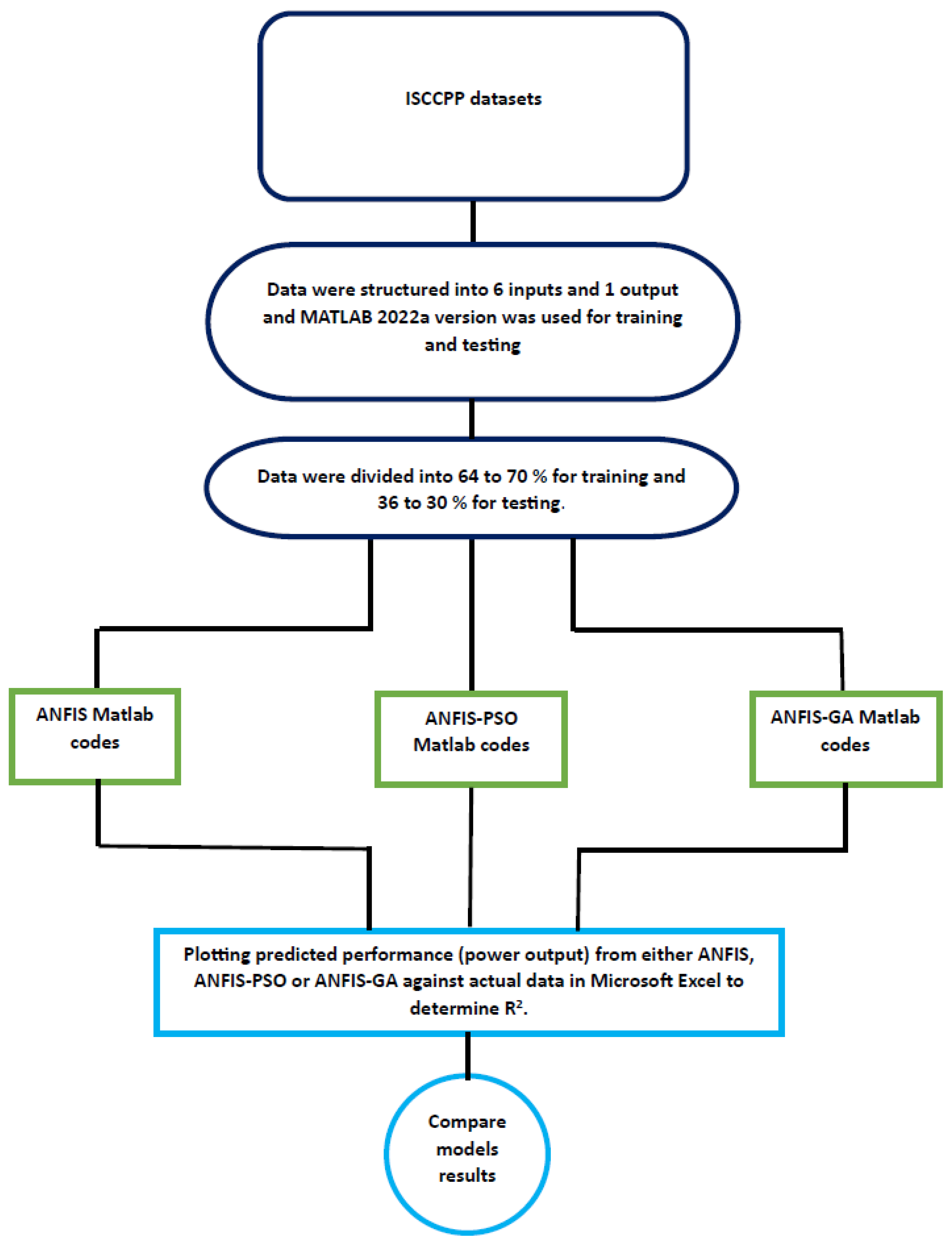
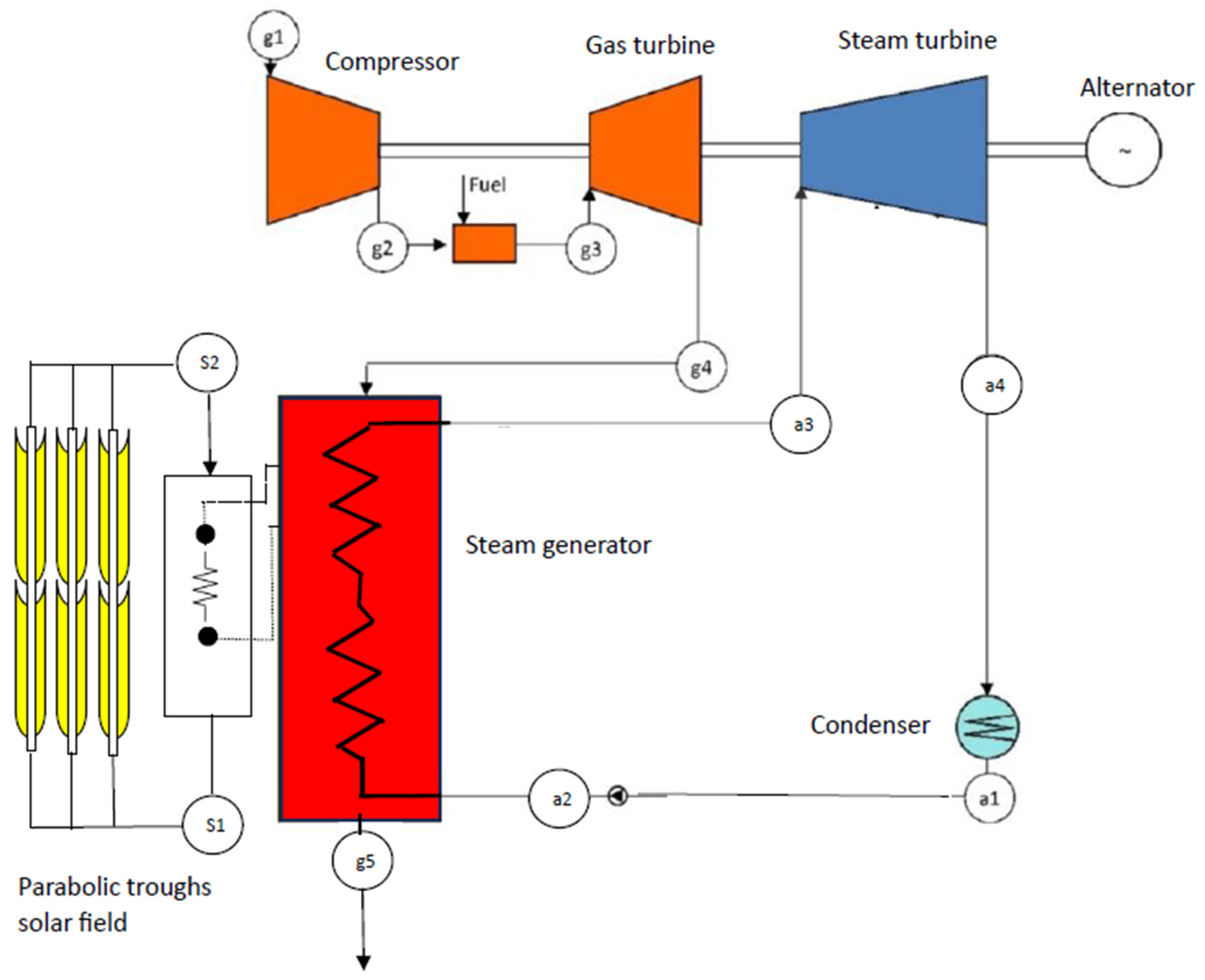
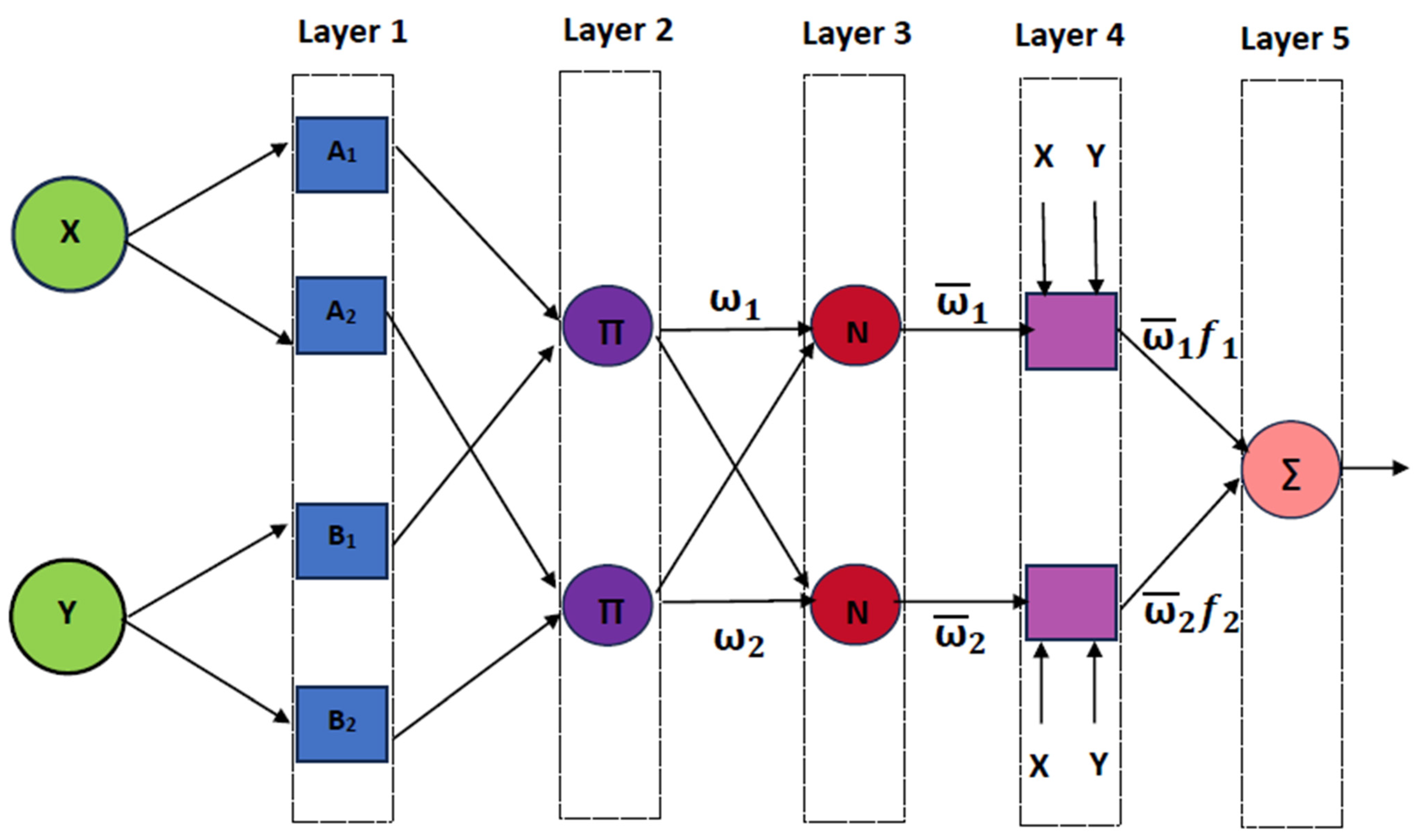
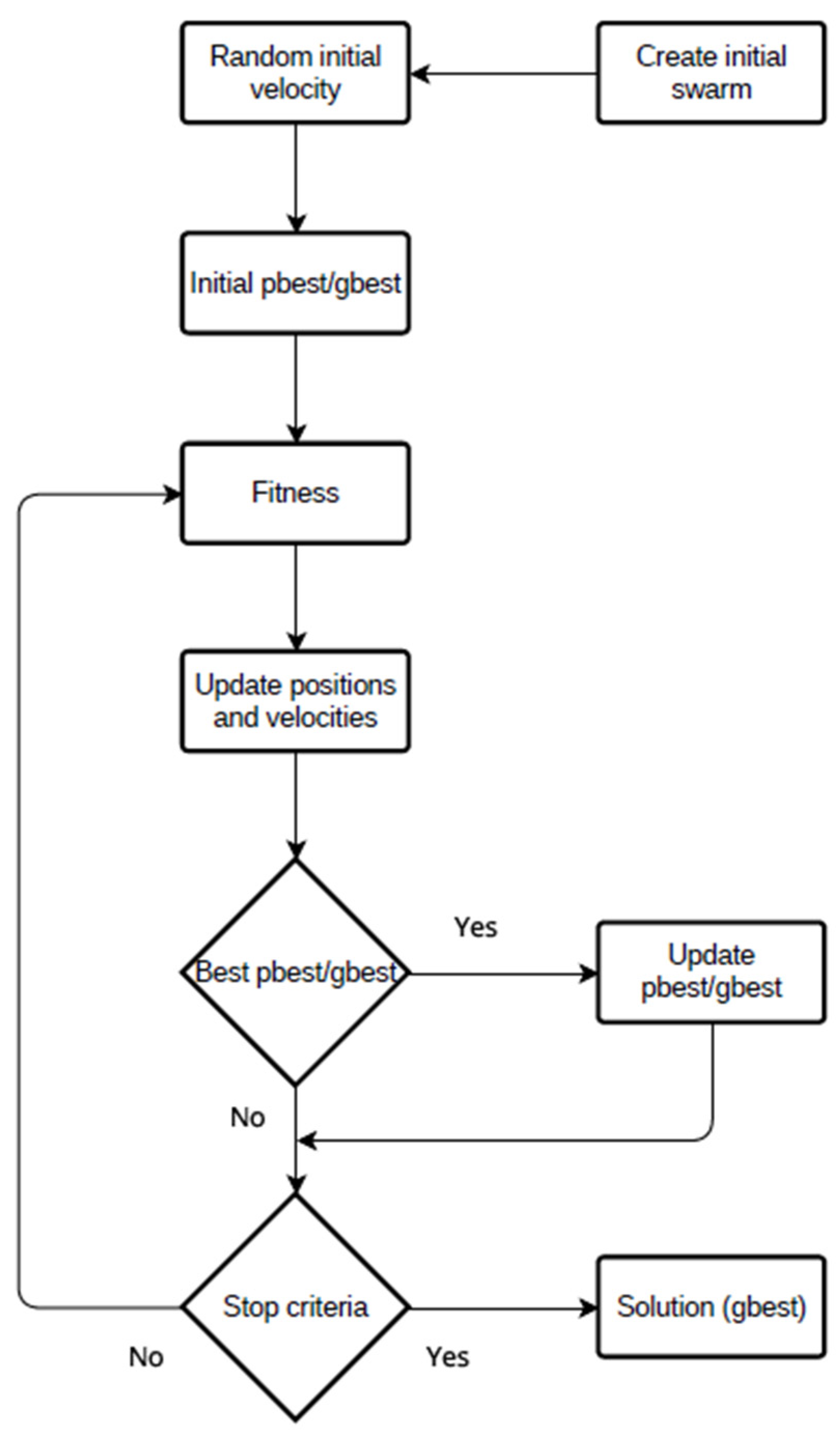

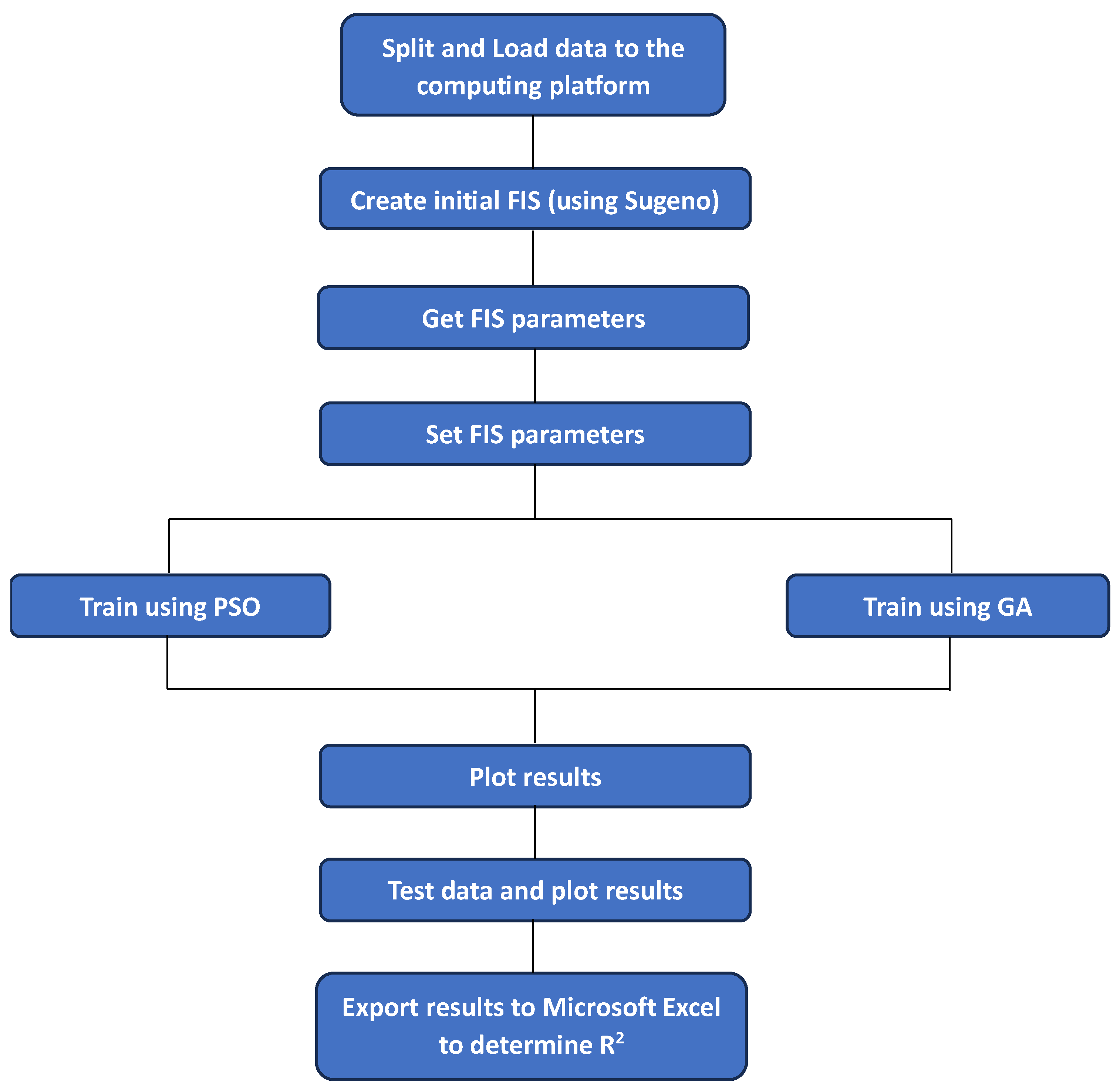
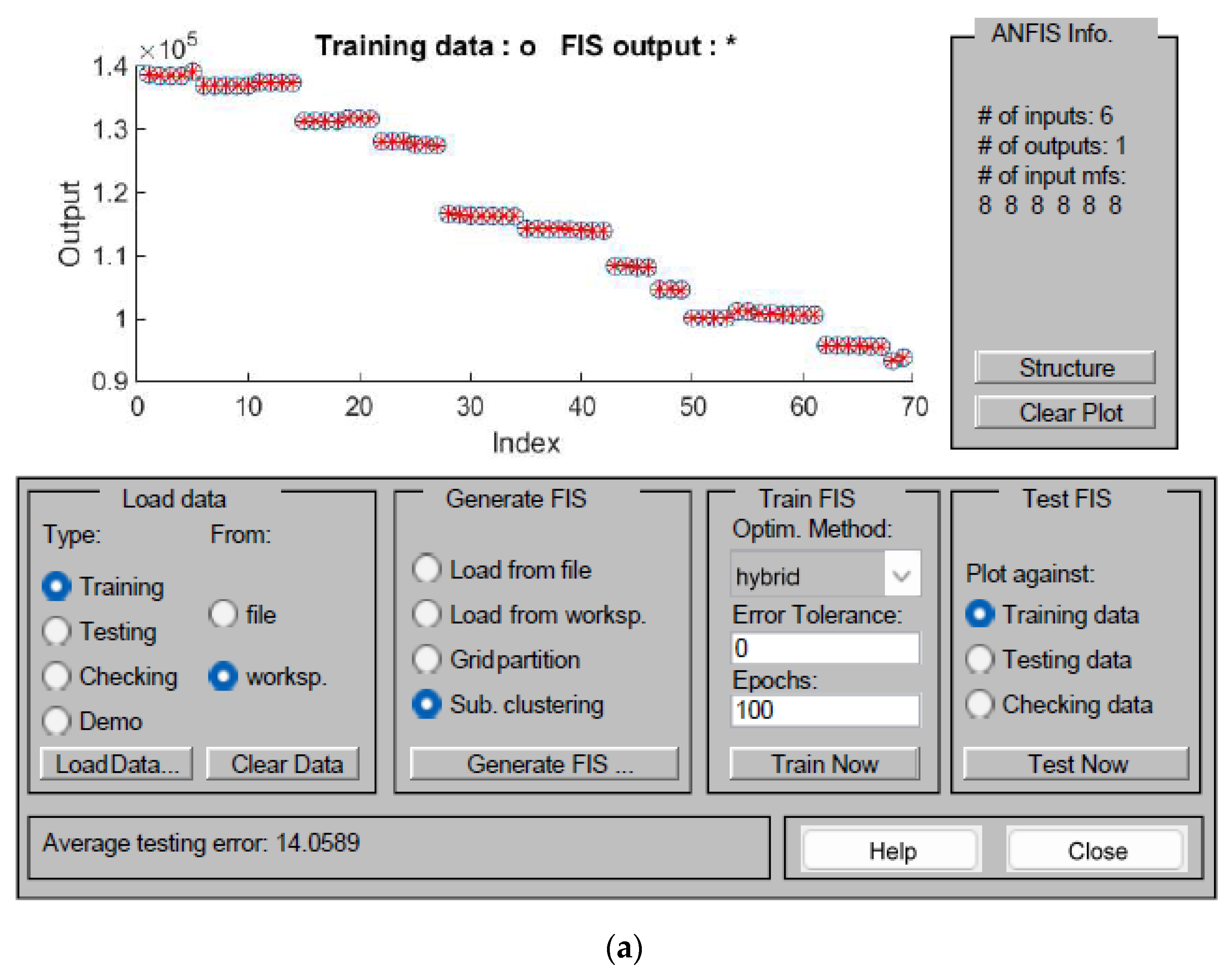
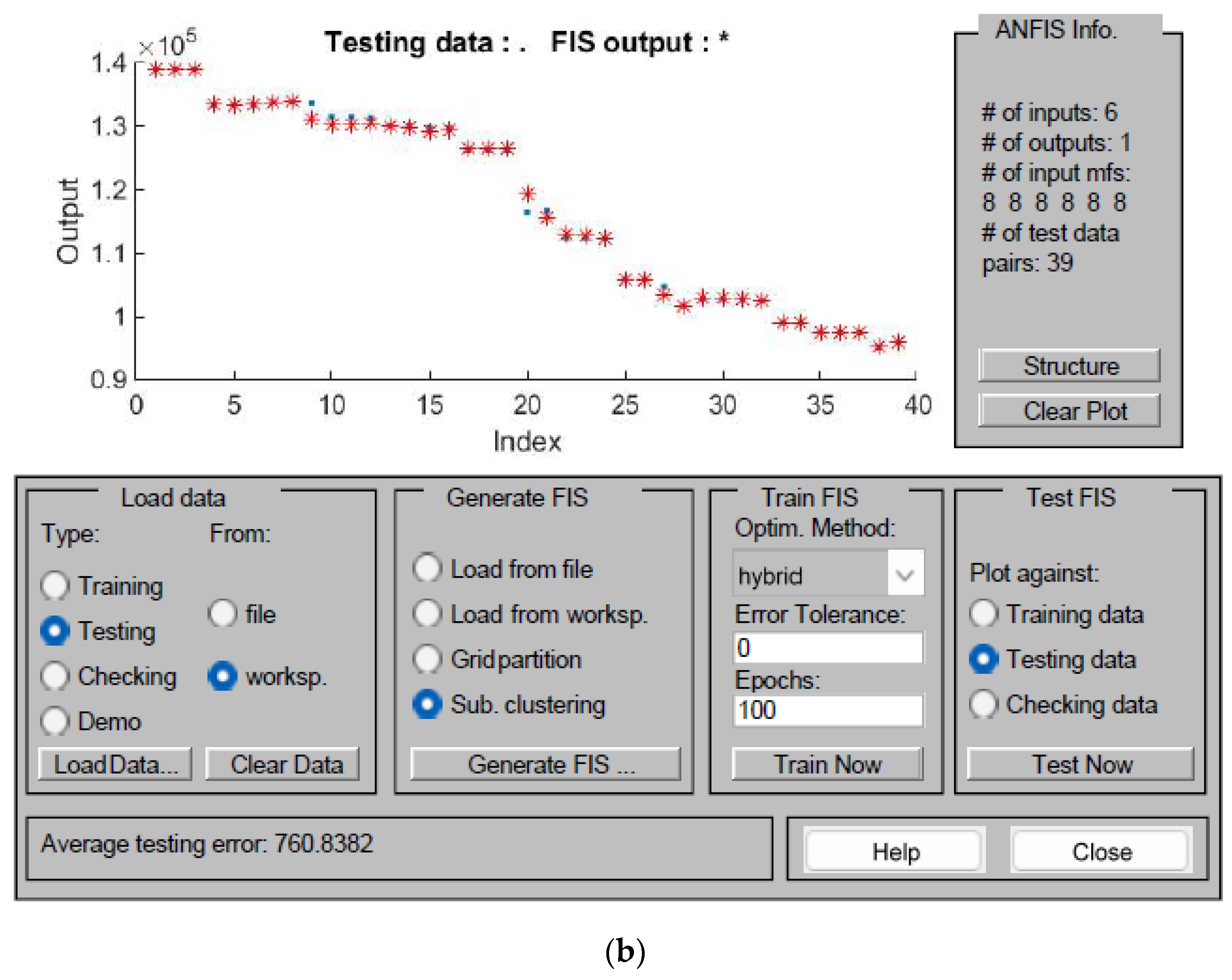
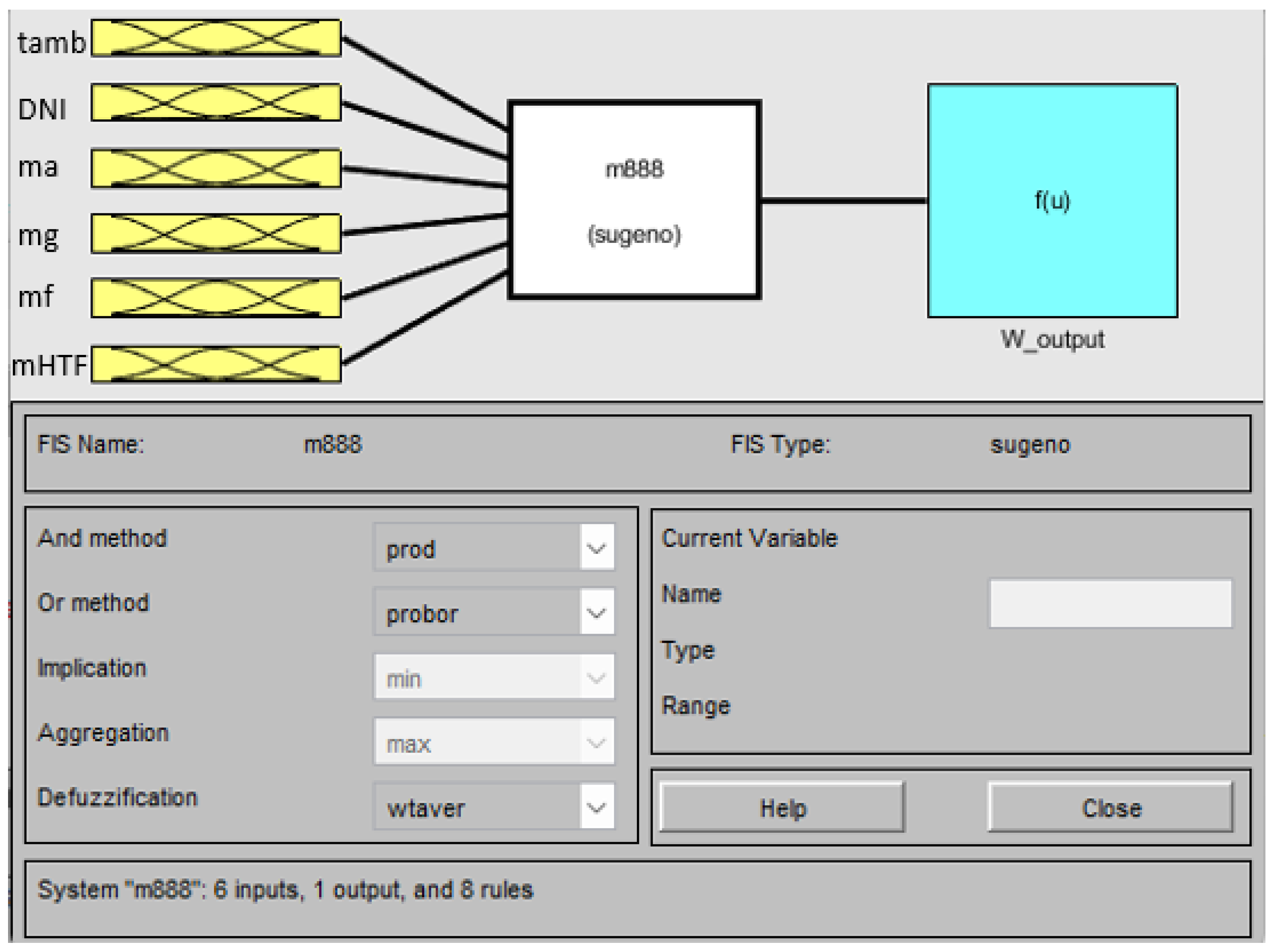

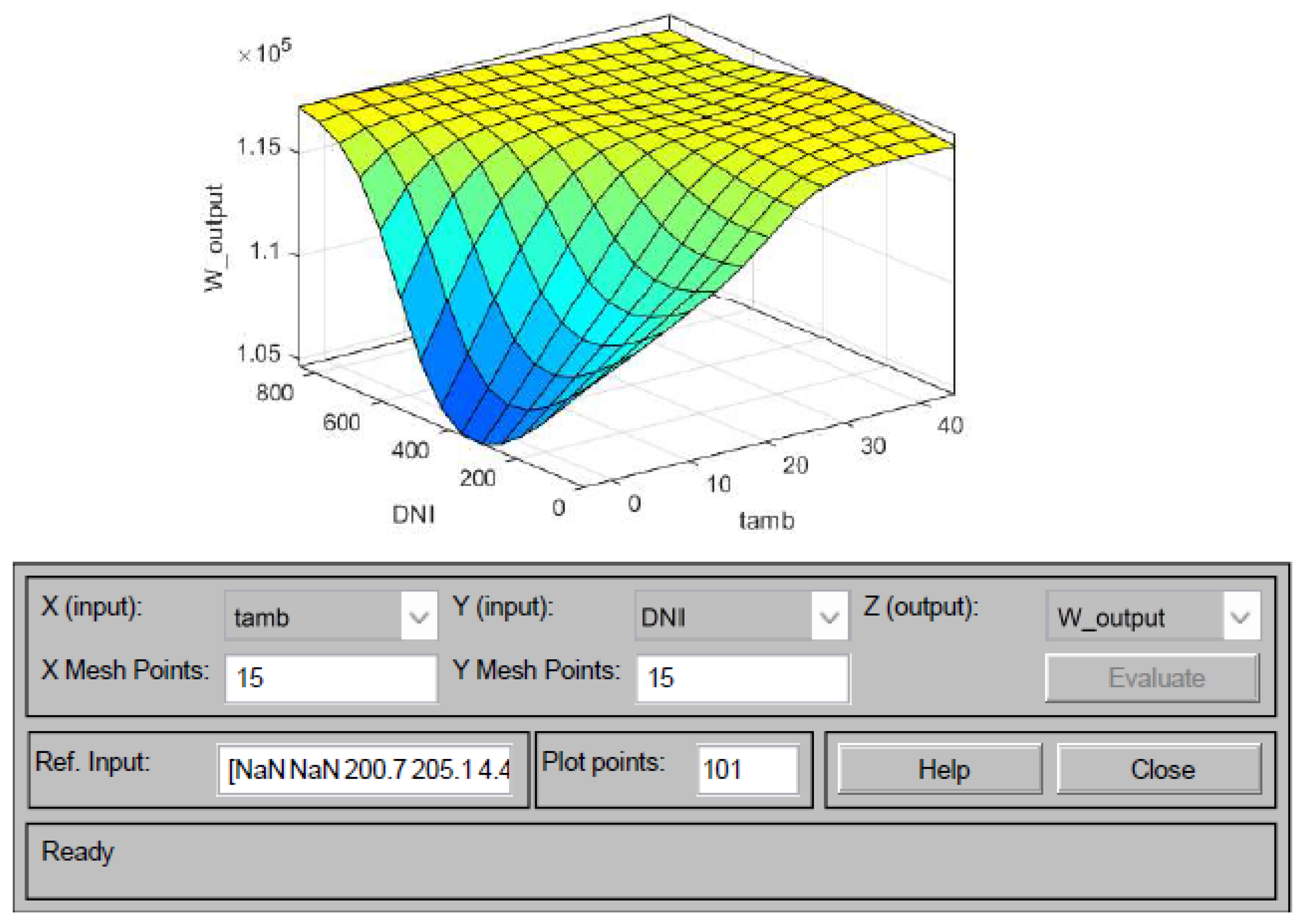
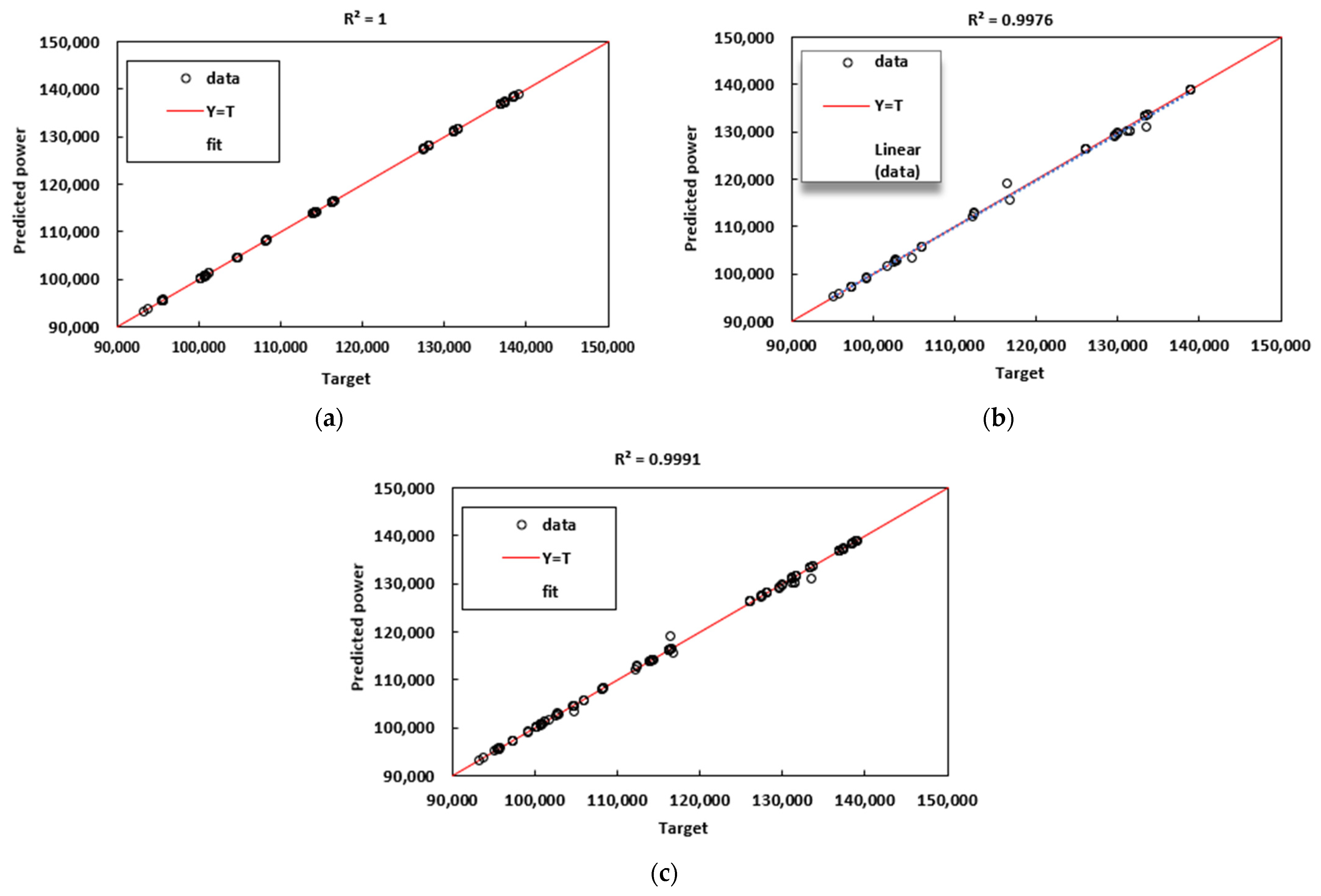
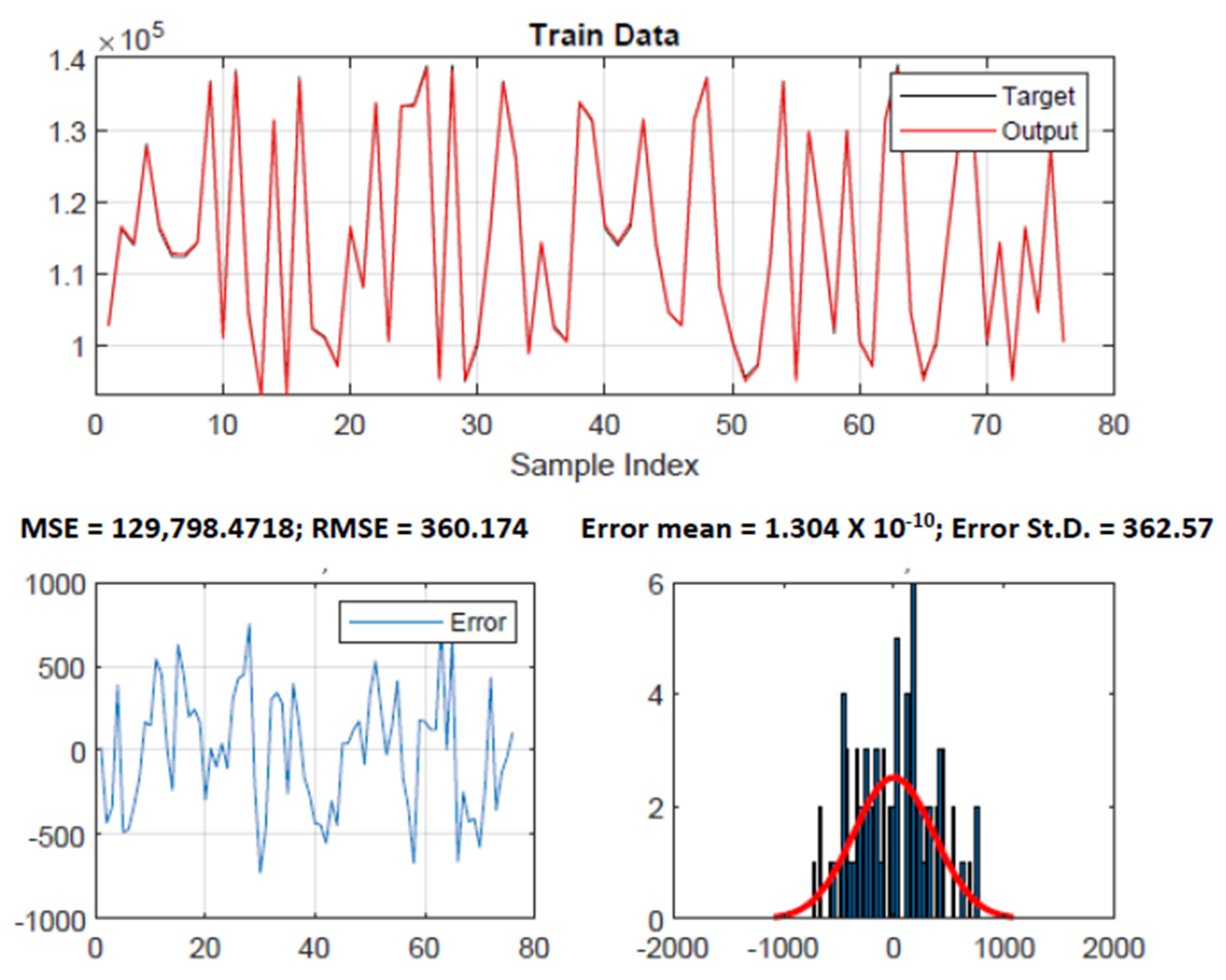
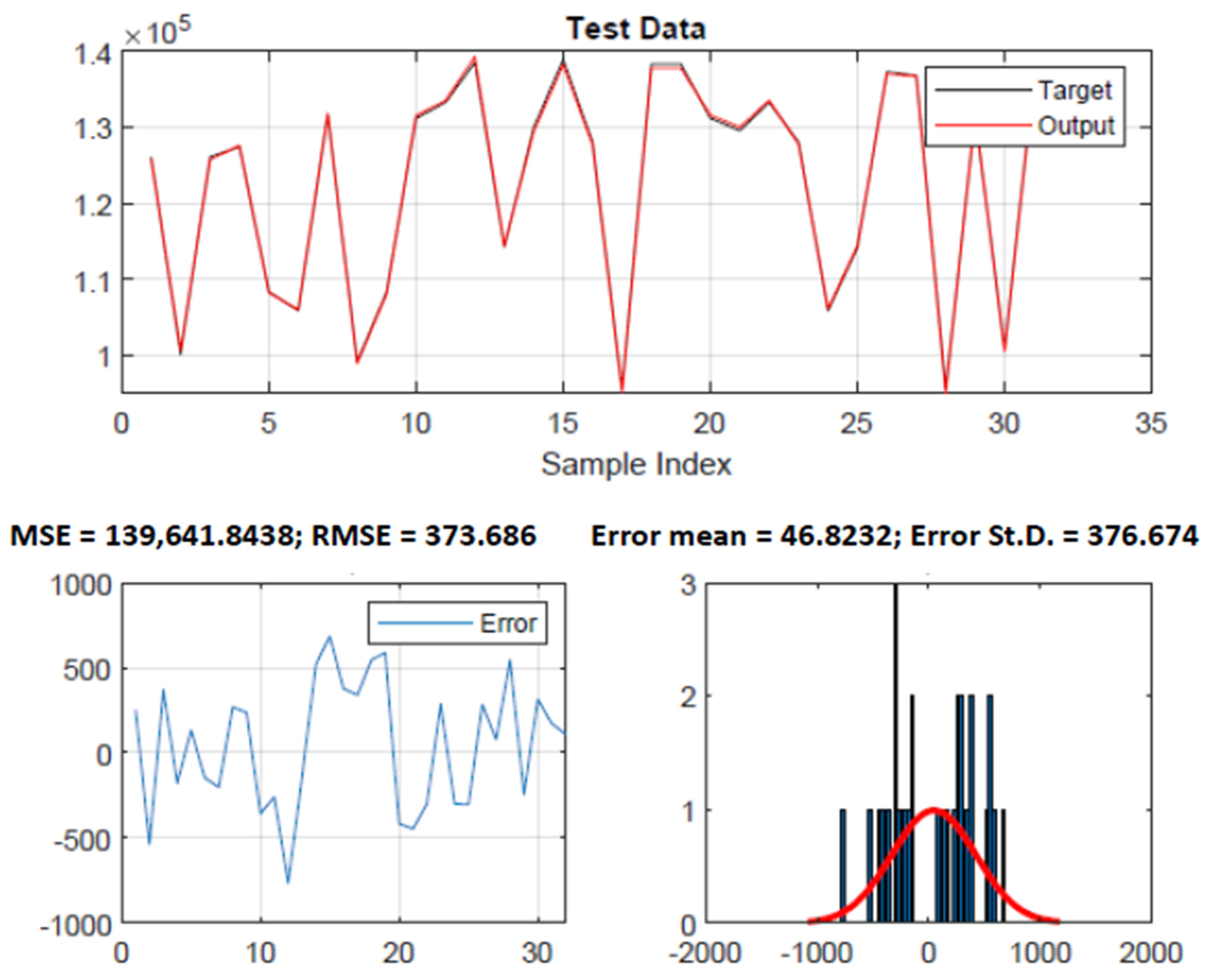

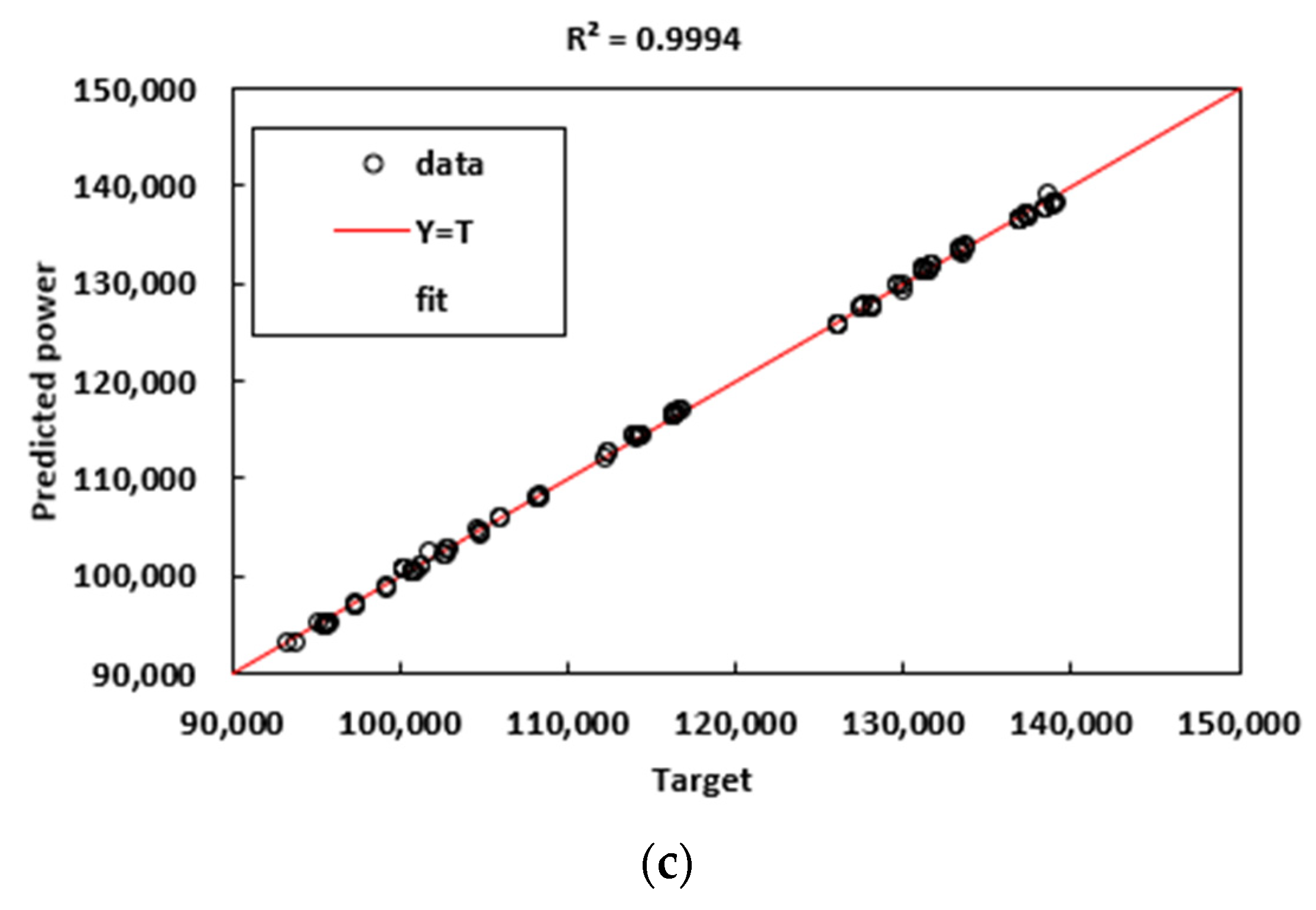
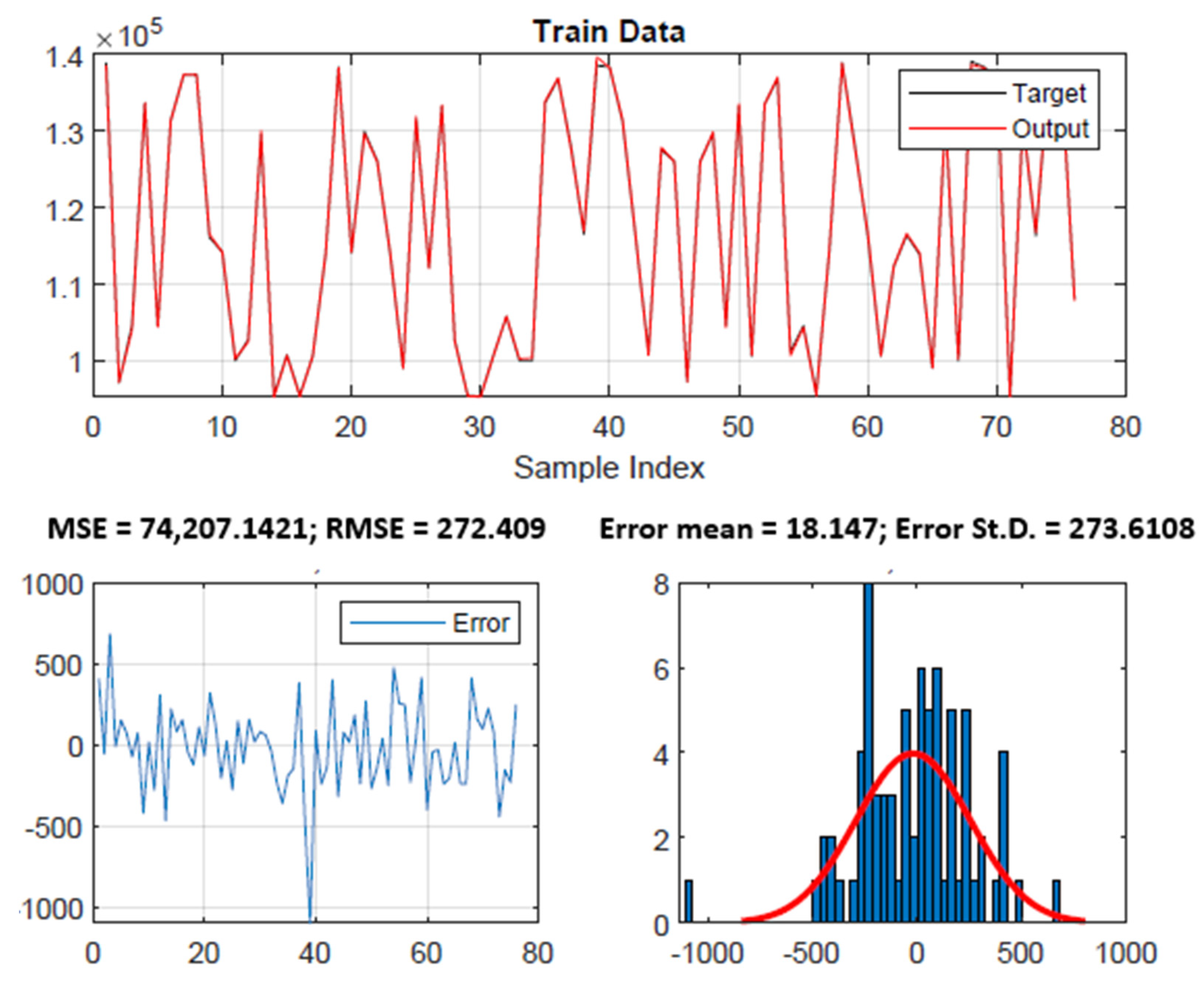
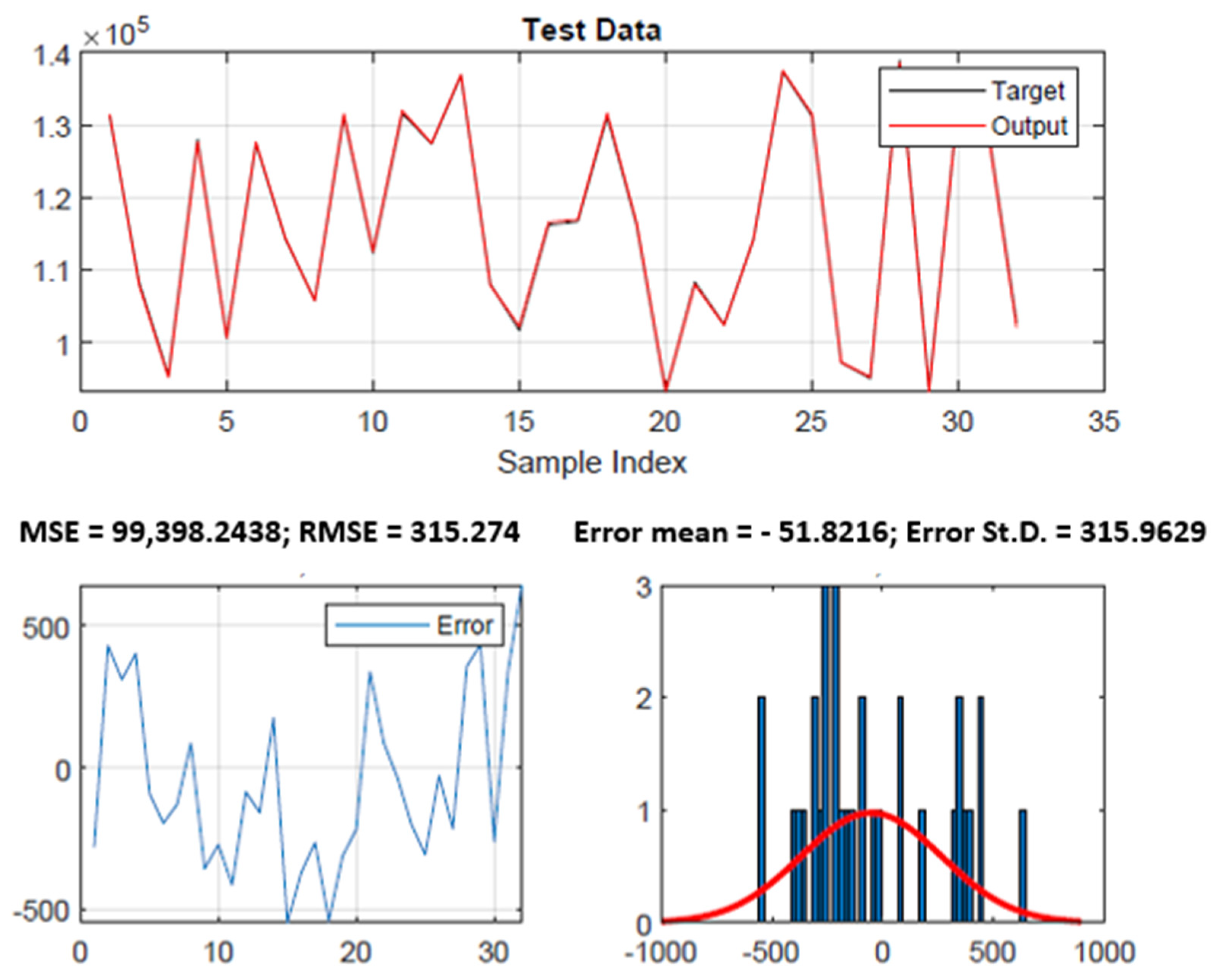
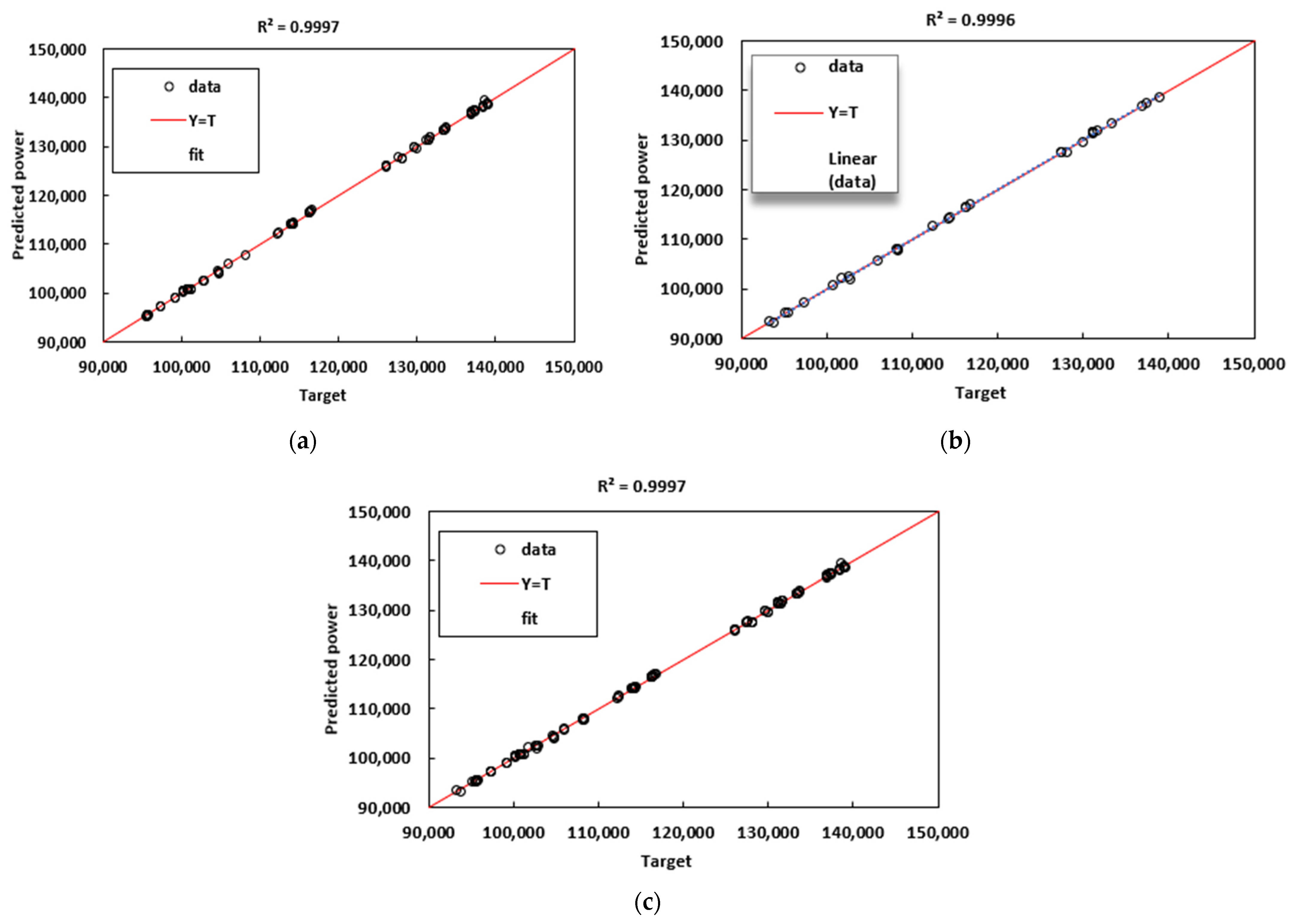
| tamb (°C) | DNI (w/m2) | ma (kg/s) | mg (kg/s) | mf (kg/s) | mHTF (kg/s) | Power Output (kW) |
|---|---|---|---|---|---|---|
| 11.0767 | 162.547 | 214 | 219 | 5 | 85.34 | 128,037.2 |
| 20.9667 | 749.527 | 201.47 | 205.76 | 4.3 | 85.34 | 116,162.6 |
| 24.9233 | 447.82 | 196.51 | 200.81 | 4.3 | 85.33 | 112,374.3 |
| 25.42 | 434.645 | 196.95 | 200.82 | 4.3 | 85.33 | 112,389.7 |
| 22.9978 | 551.628 | 198.95 | 203.26 | 4.32 | 85.34 | 114,308.4 |
| 0.61 | 88.15 | 223.85 | 229.14 | 5.29 | 85.34 | 136,802.8 |
| 36.97 | 332.64 | 183.25 | 187.23 | 3.98 | 85.33 | 101,213 |
| −0.61 | 64.63 | 225.16 | 230.5 | 5.34 | 85.34 | 138,351.3 |
| 33.025 | 137.475 | 187.24 | 191.48 | 4.24 | 85.34 | 104,705.4 |
| 44 | 0 | 174.84 | 178.72 | 3.88 | 85.34 | 93,186.5 |
Disclaimer/Publisher’s Note: The statements, opinions and data contained in all publications are solely those of the individual author(s) and contributor(s) and not of MDPI and/or the editor(s). MDPI and/or the editor(s) disclaim responsibility for any injury to people or property resulting from any ideas, methods, instructions or products referred to in the content. |
© 2023 by the authors. Licensee MDPI, Basel, Switzerland. This article is an open access article distributed under the terms and conditions of the Creative Commons Attribution (CC BY) license (https://creativecommons.org/licenses/by/4.0/).
Share and Cite
Kabengele, K.T.; Olayode, I.O.; Tartibu, L.K. Analysis of the Performance of a Hybrid Thermal Power Plant Using Adaptive Neuro-Fuzzy Inference System (ANFIS)-Based Approaches. Appl. Sci. 2023, 13, 11874. https://doi.org/10.3390/app132111874
Kabengele KT, Olayode IO, Tartibu LK. Analysis of the Performance of a Hybrid Thermal Power Plant Using Adaptive Neuro-Fuzzy Inference System (ANFIS)-Based Approaches. Applied Sciences. 2023; 13(21):11874. https://doi.org/10.3390/app132111874
Chicago/Turabian StyleKabengele, Kantu T., Isaac O. Olayode, and Lagouge K. Tartibu. 2023. "Analysis of the Performance of a Hybrid Thermal Power Plant Using Adaptive Neuro-Fuzzy Inference System (ANFIS)-Based Approaches" Applied Sciences 13, no. 21: 11874. https://doi.org/10.3390/app132111874
APA StyleKabengele, K. T., Olayode, I. O., & Tartibu, L. K. (2023). Analysis of the Performance of a Hybrid Thermal Power Plant Using Adaptive Neuro-Fuzzy Inference System (ANFIS)-Based Approaches. Applied Sciences, 13(21), 11874. https://doi.org/10.3390/app132111874







